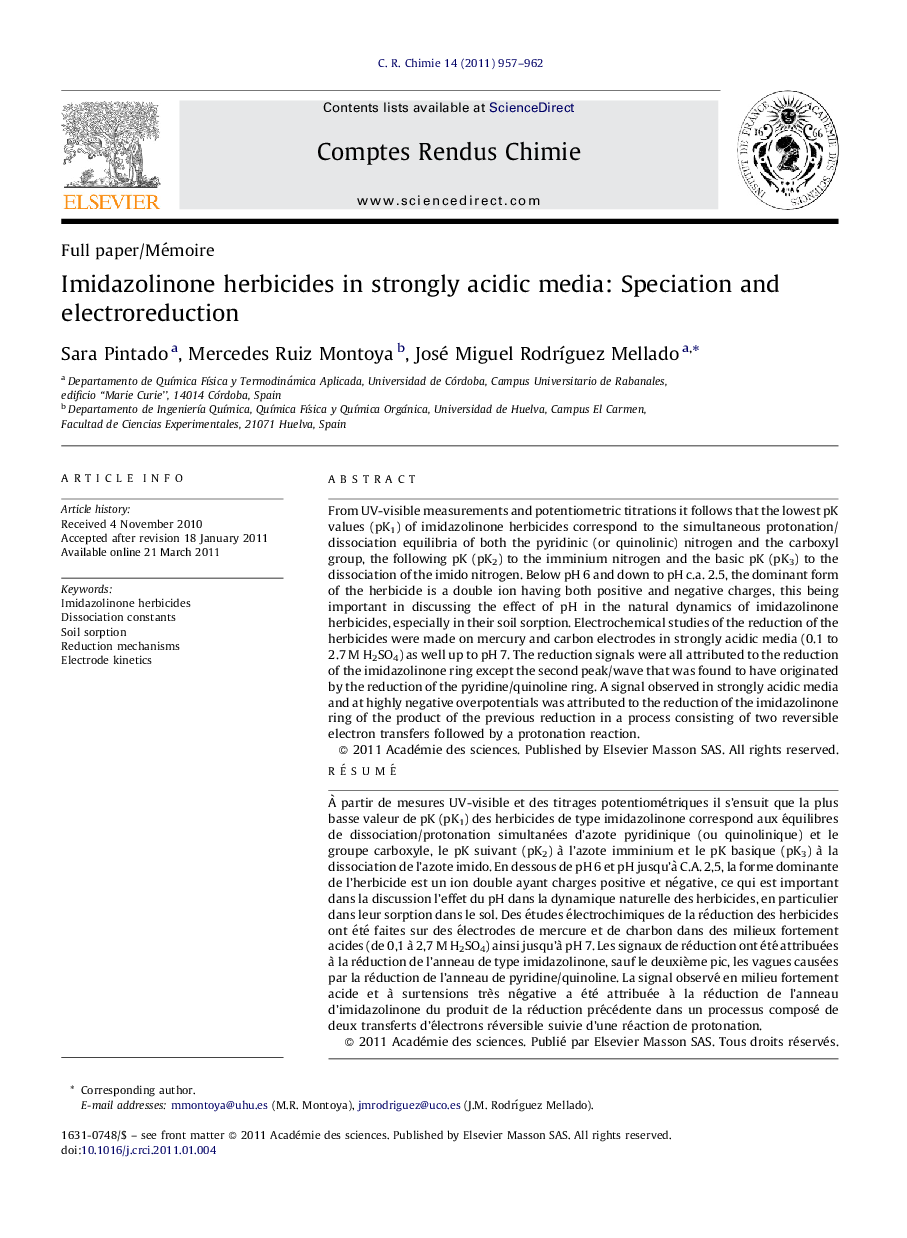| کد مقاله | کد نشریه | سال انتشار | مقاله انگلیسی | نسخه تمام متن |
|---|---|---|---|---|
| 171244 | 458441 | 2011 | 6 صفحه PDF | دانلود رایگان |

From UV-visible measurements and potentiometric titrations it follows that the lowest pK values (pK1) of imidazolinone herbicides correspond to the simultaneous protonation/dissociation equilibria of both the pyridinic (or quinolinic) nitrogen and the carboxyl group, the following pK (pK2) to the imminium nitrogen and the basic pK (pK3) to the dissociation of the imido nitrogen. Below pH 6 and down to pH c.a. 2.5, the dominant form of the herbicide is a double ion having both positive and negative charges, this being important in discussing the effect of pH in the natural dynamics of imidazolinone herbicides, especially in their soil sorption. Electrochemical studies of the reduction of the herbicides were made on mercury and carbon electrodes in strongly acidic media (0.1 to 2.7 M H2SO4) as well up to pH 7. The reduction signals were all attributed to the reduction of the imidazolinone ring except the second peak/wave that was found to have originated by the reduction of the pyridine/quinoline ring. A signal observed in strongly acidic media and at highly negative overpotentials was attributed to the reduction of the imidazolinone ring of the product of the previous reduction in a process consisting of two reversible electron transfers followed by a protonation reaction.
RésuméÀ partir de mesures UV-visible et des titrages potentiométriques il s’ensuit que la plus basse valeur de pK (pK1) des herbicides de type imidazolinone correspond aux équilibres de dissociation/protonation simultanées d’azote pyridinique (ou quinolinique) et le groupe carboxyle, le pK suivant (pK2) à l’azote imminium et le pK basique (pK3) à la dissociation de l’azote imido. En dessous de pH 6 et pH jusqu’à C.A. 2,5, la forme dominante de l’herbicide est un ion double ayant charges positive et négative, ce qui est important dans la discussion l’effet du pH dans la dynamique naturelle des herbicides, en particulier dans leur sorption dans le sol. Des études électrochimiques de la réduction des herbicides ont été faites sur des électrodes de mercure et de charbon dans des milieux fortement acides (de 0,1 à 2,7 M H2SO4) ainsi jusqu’à pH 7. Les signaux de réduction ont été attribuées à la réduction de l’anneau de type imidazolinone, sauf le deuxième pic, les vagues causées par la réduction de l’anneau de pyridine/quinoline. La signal observé en milieu fortement acide et à surtensions très négative a été attribuée à la réduction de l’anneau d’imidazolinone du produit de la réduction précédente dans un processus composé de deux transferts d’électrons réversible suivie d’une réaction de protonation.
Journal: Comptes Rendus Chimie - Volume 14, Issue 10, October 2011, Pages 957–962